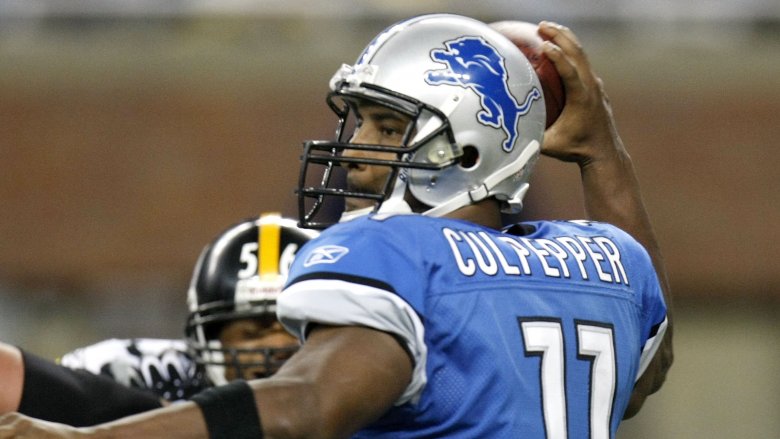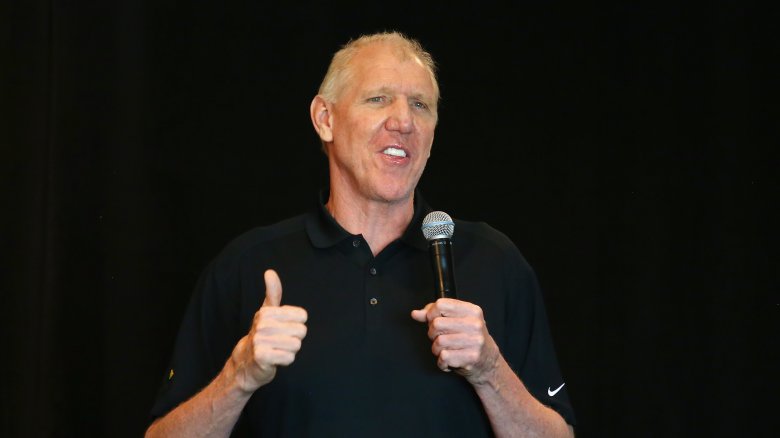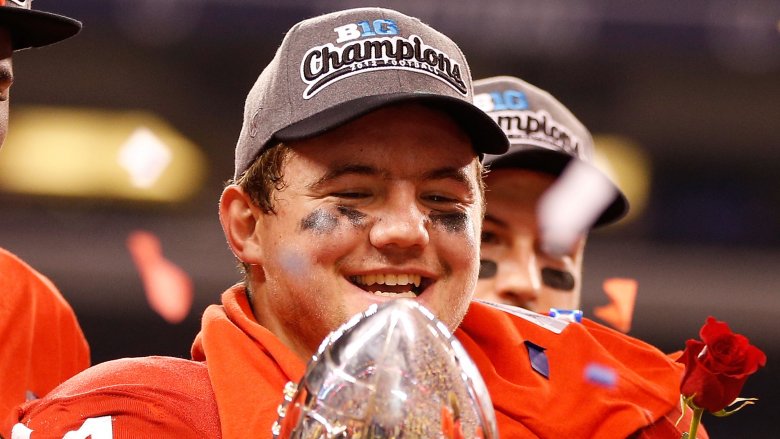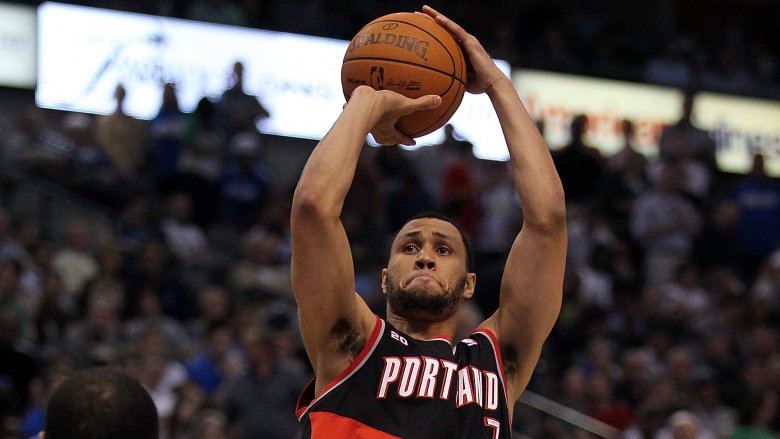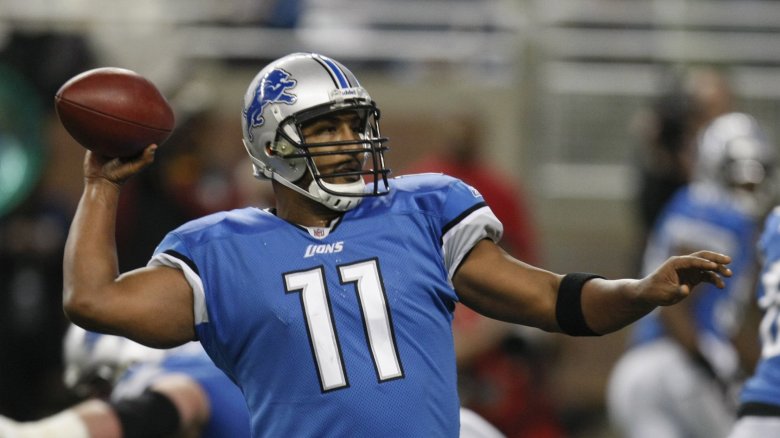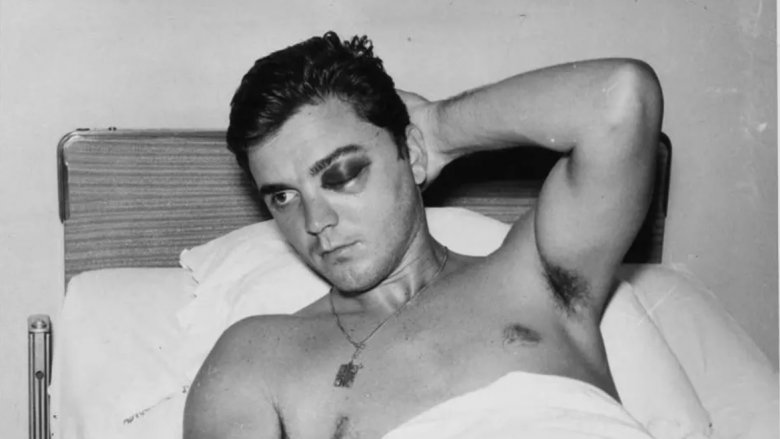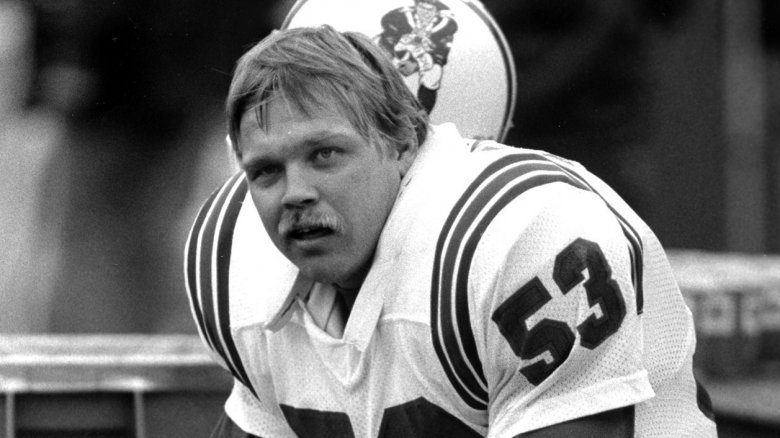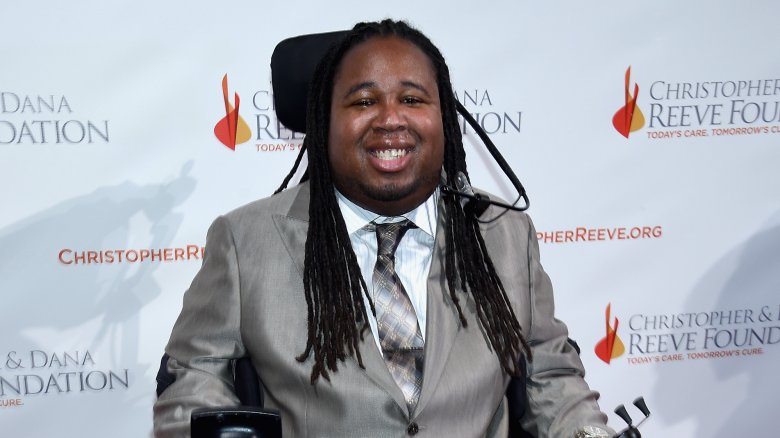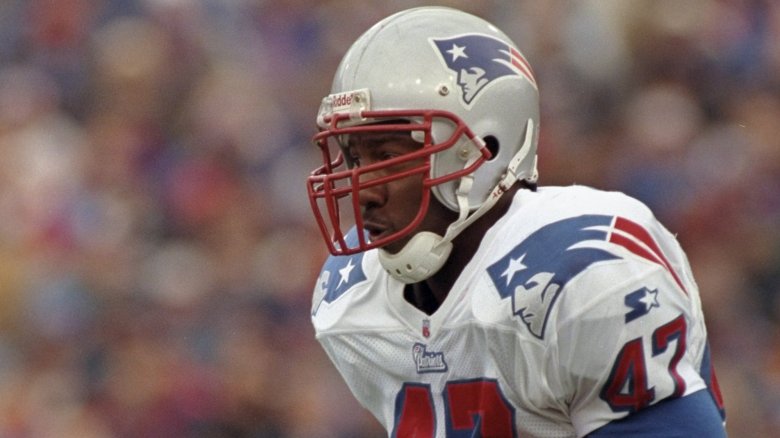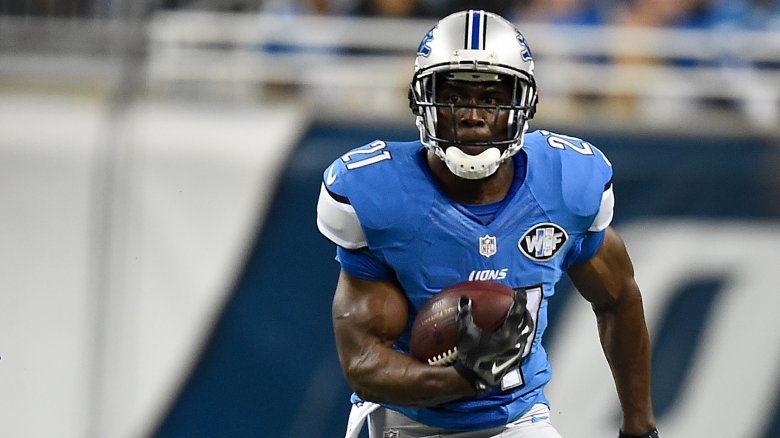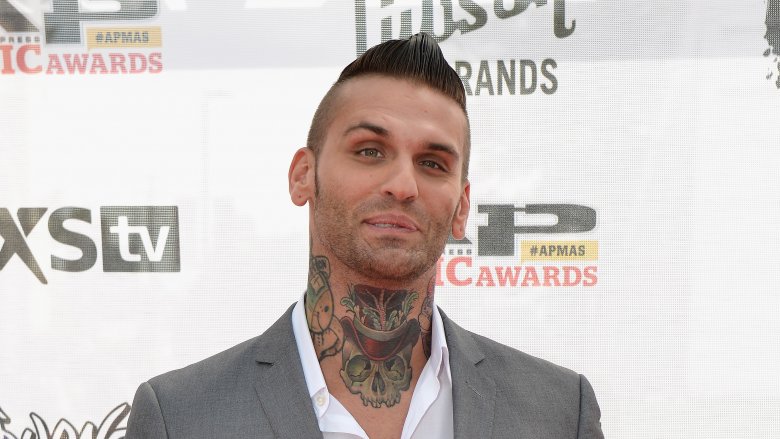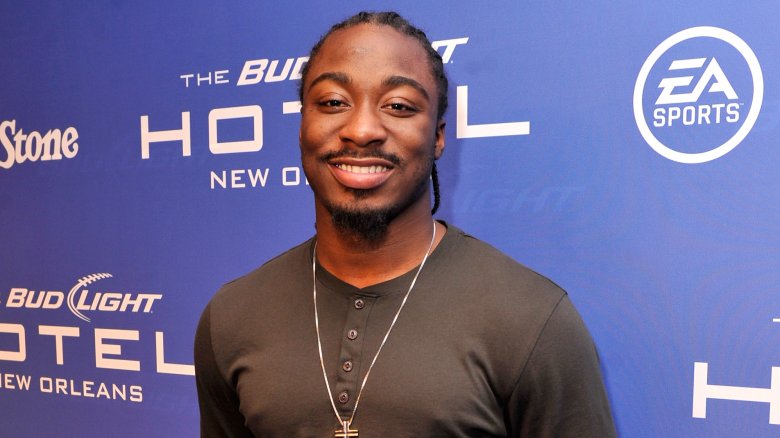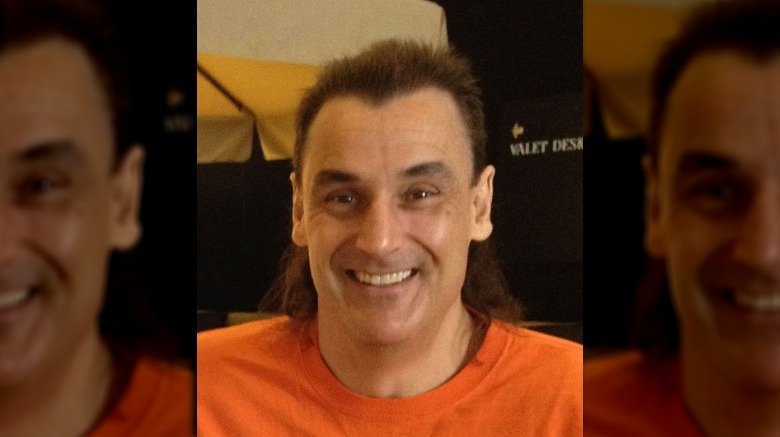Athletes Who Were Permanently Injured Just Before Making It Big
Pro sports are a crazy way to make a living. You're an athlete playing a game and yet potentially making millions of dollars from it. Along the way you may become world renowned and idolized in the process. If you're the best of the best, you can dominate not just your sport but pop culture. You'll be seen as influential in the same regard as politicians, actors, business people, and those ads on the sides of buses. You can get your own shoes and a sports drink with your picture on it! People care who you are and what you think. And man do they pay for it, too. Cristiano Ronaldo reportedly made $93 million in 2017, so being good is worth it.
The downside to playing a game to make your living is that these games can be absolutely brutal and unpredictable, and one wrong move could bring it all crashing down. Some athletes can finish a career without sustaining a significant injury, but there are many others who are not so lucky. No one's trying to end careers on purpose (except the Bountygate-era New Orleans Saints), but you can't control a situation with so many variables all the time. All these athletes seemed primed for greatness only to see it cut tragically short.
Bill Walton was on track to be one of the greatest
Way back when your parents were dating, Bill Walton was one of the biggest rising stars in all of basketball. At UCLA, Walton was named NCAA Player of the Year for 1972, '73, and '74. During his time there, UCLA went on a record 88-game winning streak, which is really staggering and must have made Game 89 a real bummer.
Unsurprisingly, Walton was the top pick overall for the 1974 NBA draft, snagged by the Portland Trailblazers. Injuries caused him to miss a number of games in that first season, including the playoffs. Within two years he was back to form and named MVP of the Finals, but a serious foot injury during the playoffs in 1978 ended his season.
Walton's foot would prove to be his Achilles heel. Despite being NBA MVP for 1978, making the All-Star Team in 1977 and 1978, and a string of other awards, he was never able to shake a serious issue with his foot and ankle. He told Sports Illustrated he's undergone almost 40 orthopedic surgeries in his life to fix the problems and he ended up losing three seasons in the middle of his NBA career because of it.
The fact Walton was such an amazing athlete is a testament to his incredible skill. Had it not been for injuries, there's no telling what more he could have done.
Chris Borland took himself out of the game
There's been a lot of talk in recent years about the prevalence of head injuries in the NFL, and Will Smith even made a movie about it (the one that didn't have The Joker). The issue is out there and it's pretty awful to see some of the statistics about former pro football players and what they've endured. But few players ever brought the issue to light during the prime of their career the way Chris Borland did.
Borland was in his first year as a linebacker with the San Francisco 49ers when he was making a name for himself as a monster on the field. In his second game starting with the team, he racked up 18 tackles, including a full-on WWE-style suplex tackle of Rams running back Tre Mason.
At the end of Borland's season, however, he made the surprise announcement that he was calling it quits. Having suffered his first concussion as a child and more concussions later on in life, he wasn't interested in putting himself at any further risk of injury. At the time of the announcement, Borland had no signs of any neurodegenerative disorder but also said he had no intention of waiting around until he did have symptoms. Better safe than sorry is a decent way to live.
Brandon Roy's knees were destroyed
In 2007 Brandon Roy was named NBA Rookie of the Year. As Complex points out, he was a three-time NBA All-Star and was arguably one of the best shooting guards in the league during his time, so he absolutely knew what he was doing on the court.
Unfortunately, Roy only managed six seasons in the NBA before everything fell apart after a long battle with arthritis that left his knees in shambles and could have cost him his ability to walk.
In 2011, Roy announced his retirement after enduring serious pain in his knees for two seasons. By the end, he said he had no cartilage left between the bones in both knees and simply couldn't manage the game any longer. He's already undergone six surgeries, and the doctors could do nothing more.
Roy had been dealing with knee issues since high school and was playing with severe arthritis. He told OregonLive he was dealing with Level III arthritis. For perspective, Level IV is the last level and would have meant a knee replacement, which is the kind of thing that limits a normal person just walking around their house, never mind someone trying to manage a career in the NBA.
Daunte Culpepper was taken out in his prime
In 2000, Daunte Culpepper finished his first season with the Minnesota Vikings having thrown for nearly 4,000 yards and 33 touchdown passes. That's not too shabby for your first year as a quarterback in the NFL. After a couple shaky years he hit his stride in 2004 throwing for 4,700 yards and 39 touchdowns, according to his official NFL stats. There were three games where he threw for 5 touchdowns each. It was a decent showing for the young quarterback and seemed to bode well for the future.
Culpepper's 2005 season started a little rough but things got really bad really quickly. As ESPN reported, a crushing blow in Week 7 took out Culpepper's knee and tore his anterior cruciate, medial collateral, and posterior cruciate ligaments. He was out for the rest of the season.
When Culpepper returned in 2006, he threw a dismal two touchdown passes and underwent another knee surgery to remove some cartilage that was causing him trouble. In 2007 there were only five TDs, and the next two seasons he played were even worse. In 2009 he was permanently benched by the Lions, though he tried to pull out another season in 2010 in the United Football League. He was never able to come back from that knee injury, though.
Tony Conigliaro's face was broken by a pitch
If you've ever watched a ball game and gotten really squeamish when a batter gets hit by a pitch, maybe skip ahead. You probably don't want to know all the details of what happened to Tony Conigliaro, one of the most tragic tales of a star taken out in his prime in all of sports history.
Tony was signed by the Red Sox back in 1962 when he was only 17. He was an absolute phenom on a ball diamond. In his rookie season he hit 24 home runs and 52 RBIs. His first at-bat was a home run against the White Sox.
The very next year, Conigliaro led the league in home runs. The year after that he reached the 100 mark, making him the youngest player to ever do so at age 22, according to FenwayFanatics. That same year Congiliaro was batting against Angels pitcher Jack Hamilton. Conigliaro took the pitch on the side of the face –- this was before batting helmets had that ear guard — and the force of the blow was devastating.
The ball fractured his cheekbone and dislocated his jaw. Worse than that, it all but destroyed his eye. He would never again have proper vision on his left side. The injury caused him to miss all of the 1968 season and though he made more than one valiant play at a comeback, his injuries proved too great to fully overcome.
Clayton Weishuhn couldn't stop getting hurt
Back in the day, Clayton Weishuhn had a lot going for him –- he was the Lonestar Conference Lineman of the Year in 1980 and 1981 before being drafted into the NFL in 1982 by the New England Patriots. He continued his streak as a defensive force of nature and led the Pats season for tackles with a mind-boggling 229 in 1983. He also has that badass name that makes him sound like a no-nonsense cowboy. Unfortunately, a cool name and a penchant for knocking guys down doesn't do much to keep you safe from injury.
After only two seasons with the Patriots, Weishuhn took a hit in the first week of 1984 that destroyed his knee so badly he needed to undergo surgery to rebuild the ligaments, according to DailySportX. The injury was so bad that it not only cost him the full 1984 season, but 1985 as well. He returned to the gridiron for the 1986 season and, in a cruel twist of luck, went down almost immediately with a groin injury. Then, just to prove that bad luck has a habit of never ending, he came back only to be injured yet a third time, this one a hamstring injury. He only played four games in the 1986 season before moving to the Green Bay Packers. He managed nine games in 1987, his last in the NFL.
Eric LeGrand had to fight back from paralysis
Even among injured players, most get to at least experience their dream for a short time by playing in the big leagues. Eric LeGrand didn't quite make it that far, despite a promising high school and college football career.
While playing defensive tackle for Rutgers, LeGrand was a standout defensive player. He racked up 33 tackles in the 2009 season and was off to a strong start in the first several games of 2010 until a tackle gone wrong in the sixth game of the season rendered him paralyzed, the result of two broken vertebrae.
LeGrand needed an immediate nine-hour surgery. Doctors told him he'd never be able to breathe on his own again, he'd need a feeding tube for the rest of his life, and he'd never walk. It's the kind of crushing news that could send most people into a spiral of hopelessness. LeGrand, however, was not having any of that crap.
Five weeks after his injury, LeGrand told doctors to take him off the ventilator. They did, and he was breathing on his own, according to Sports Illustrated. He has sensation in the upper part of his body now and though he still can't walk, he believes he absolutely will one day. In 2012, the Tampa Bay Buccaneers drafted LeGrand to the team, a symbolic gesture for a guy whose perseverance and determination is quite an inspiration.
Robert Edwards nearly lost a leg
In his final year at the University of Georgia, Robert Edwards Rushed for 908 yards, a respectable number for a player who had a history of missing partial seasons due to injuries. He was drafted in the first round by the New England Patriots, and in the 1998 season he rushed for 1,115 yards. Things were looking up until he was sidelined by one of the most unpredictable and ridiculous injuries ever.
Just before the Pro Bowl, Edwards was in Hawaii playing a game of flag football on the beach, which is something a million kids across America probably do every weekend in the summer. Edwards took such a brutal hit to the knee there was talk of amputation. Doctors tried to repair the damaged artery in Edwards' leg instead, hoping he could maybe at least walk again one day. That's a rough prognosis no matter who you are, let alone a rookie on his way to the Pro Bowl.
All the ligaments in Edwards knee were destroyed, and the damaged artery needed immediate surgery. Despite the threat of losing the leg, Edwards did manage to mount a comeback with the Miami Dolphins in 2002. Unfortunately, his gameplay was never up to the level exemplified in his rookie season. He switched from NFL to the Canadian Football League in 2005 and managed a decent three years of play with Toronto and Montreal, so at least he got to experience poutine.
Reggie Brown almost died on the field
Linebacker Reggie Brown was only in his second year in the NFL, playing with the Detroit Lions, when he received a brutal hit that would not just end his career, it nearly ended his life. The young up and comer was only 26 games into his football career, in the final game of the 1997 season, when he dove to assist with a tackle on New York Jets halfback Adrian Murrell.
Brown grabbed Murrell, but his helmet crashed into the Jets' Lamont Burns. According to The Detroit News, he said he remembered feeling pressure on his head and then landing on his back, staring up at the roof of the Pontiac Silverdome. His teammates were telling him to get up so they could get on with the game, but Brown couldn't comply. He couldn't move at all. Worse, he couldn't breathe.
It only took a moment for the gravity of the situation to become clear, and the team doctor quickly began CPR. Once stabilized, Brown was rushed to hospital. He had suffered a spinal cord contusion, and emergency surgery was performed that likely saved him from being permanently paralyzed.
It was several days before doctors were able to determine if he'd be able to regain any function at all, which thankfully he did, though he had to relearn even the most basic movements.
Corey Graves took too many hits to the head
"The American Dream" Dusty Rhodes once described Corey Graves as "the next thing" in wrestling, according to Rolling Stone, which is no small endorsement. This is an industry that, for all of its goofy gimmicks and choreographed weirdness, makes stars. Big Stars. Look no further than Dwayne "The Rock" Johnson or John Cena for evidence of that. If you make it in the WWE, you could very well make it anywhere.
In 2014, Graves was poised to be huge. He had the two things you need to be a star in the industry –- the physical prowess and the engaging personality. Lots of wrestlers have the first one, but not many really capitalize on the second. Graves definitely had the persona down. Unfortunately, it would be the physical side that did him in.
A second concussion in the span of about six months took Graves out of the ring for good. He recalled when Triple H took him aside one day and said the doctors weren't going to clear him to get back into the ring again. He thought his career was over.
Lucky for Graves, the personality that impressed Rhodes has given him a second life as a ringside announcer. But his future in the ring ended for good when he got his bell rung one too many times.
Marcus Lattimore never even got to start playing pro
Running back Marcus Lattimore had only just signed to play for the San Francisco 49ers after skipping the final year of his college career in 2013 when his NFL dreams came to a screeching halt. He'd held a record for 38 rushing touchdowns at South Carolina and rushed for nearly 1,200 yards during his freshman year according to official school stats. He had been named Sporting News Freshman of the Year and SEC Freshman of the Year. The kid was primed and ready to go places.
Unfortunately for Lattimore, during one of his games in his last year at South Carolina, he suffered a wicked knee injury that tore every ligament in the right knee and dislocated his kneecap. Just a month and a half later he declared himself eligible for the NFL draft. The 49ers drafted him in the fourth round, signing him to a four-year, $2.5 million contract, much less than he would have gotten had he not been injured. The 49ers expected him to bounce back from the injury and the knee surgery he'd undergone.
Lattimore spent the entire 2013 season benched as he recovered from the knee injury and ended up officially retiring from football at age 23 having never played a game in the NFL.
Mike Utley broke his neck on a play
Way back in 1991, things were looking pretty awesome for Mike Utley as an offensive lineman in just his third season with the Detroit Lions. (At this point, it's probably fair to say they're a cursed team.) He graduated from Washington State University as the most decorated athlete in the team's history where he was selected to six All-America first teams. He was drafted in the third round by the Lions.
His NFL career got off to a shaky start with a number of minor injuries plaguing him and keeping him from playing to full potential. It was in the 11th game of the '91 season, against the Rams, that things went south. A crushing hit to the head put Utley down and he said he felt a burning sensation overwhelming his body. He realized he'd broken his neck, but even as he was being carted off the field, he managed to flash a thumbs up for the crowd.
The extent of the injury was worse than anyone could have predicted. The trauma to his spinal cord had rendered him paralyzed from the chest down. Fortunately, after some years of physiotherapy and rehab, Utley did regain much of the use of his upper body including his arms and hands. He now works with his foundation to help others who have suffered spinal cord injuries.
